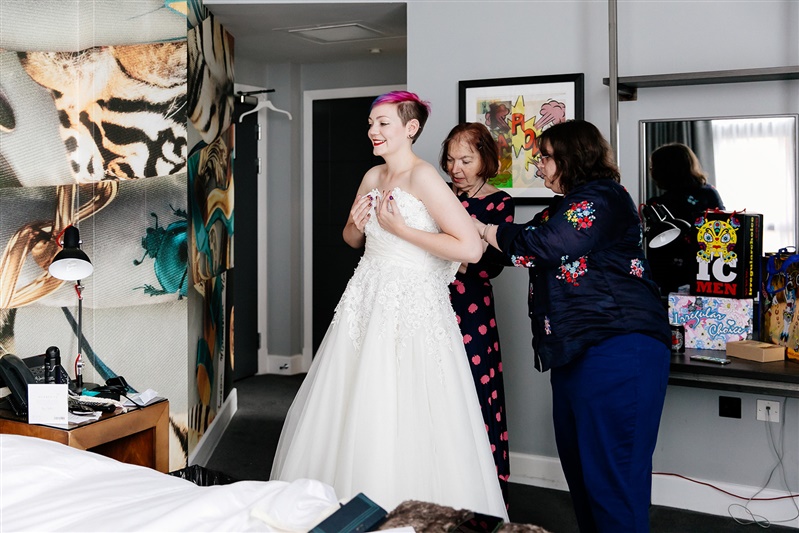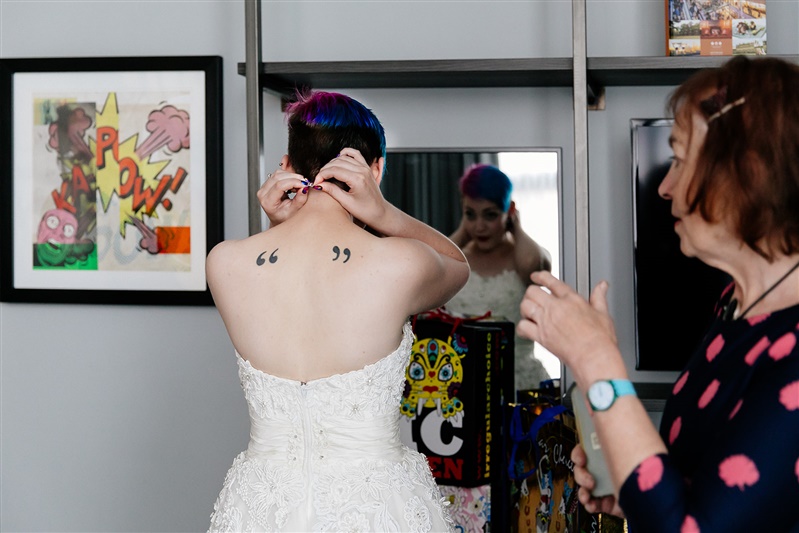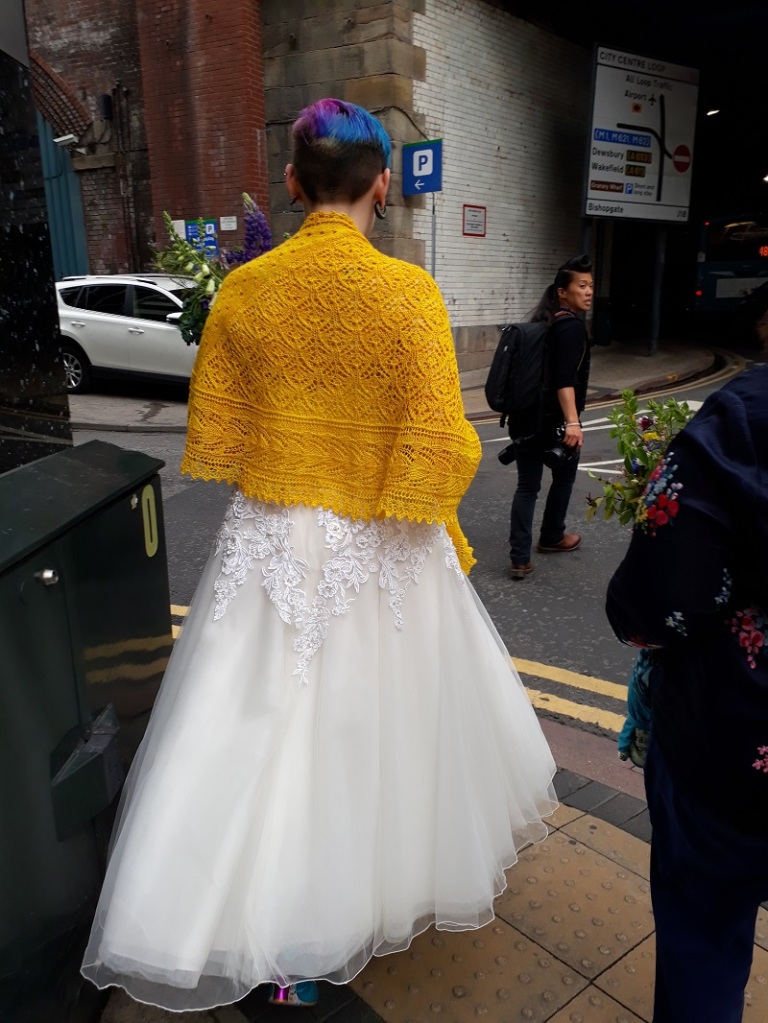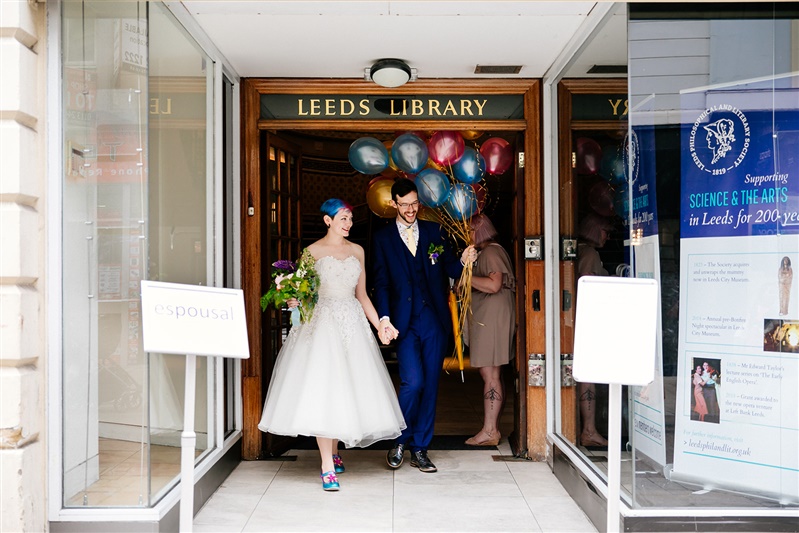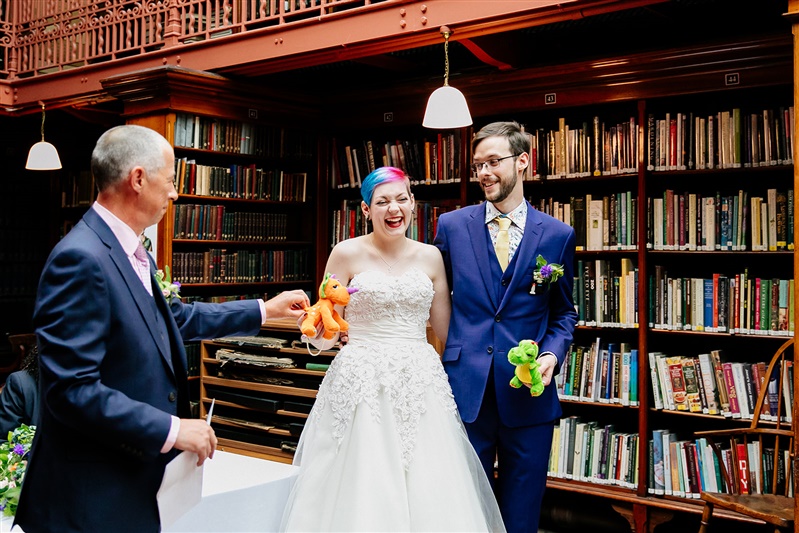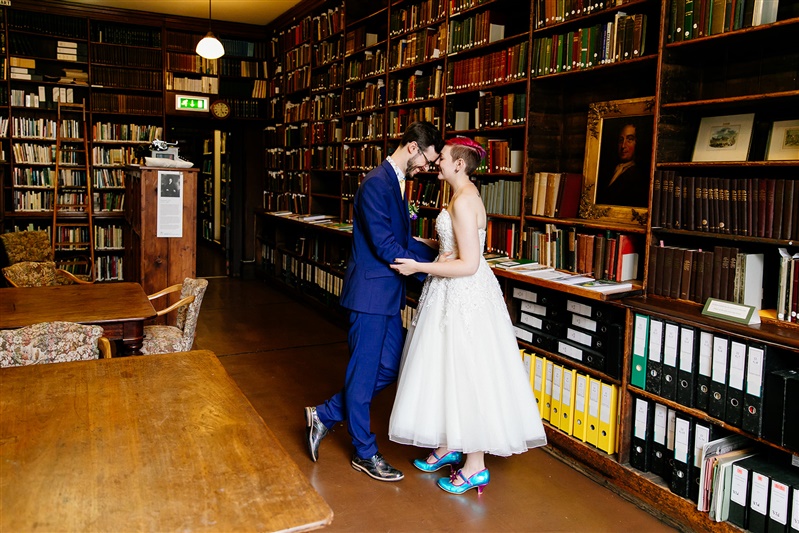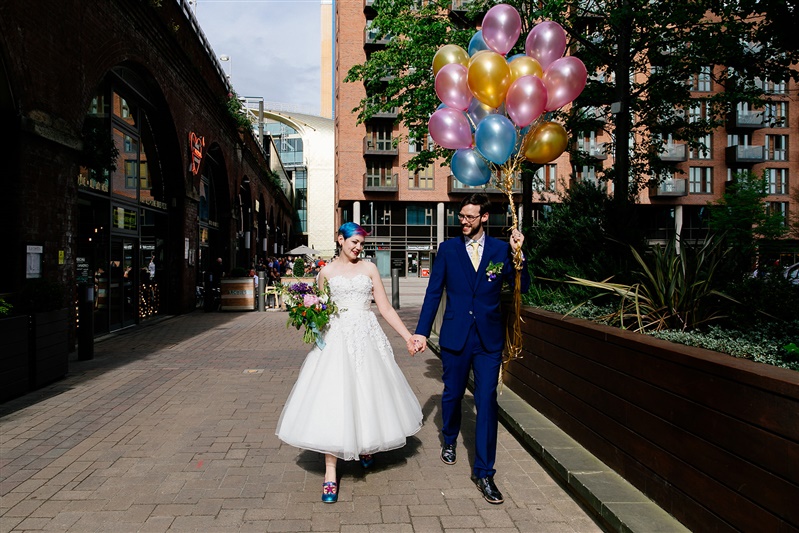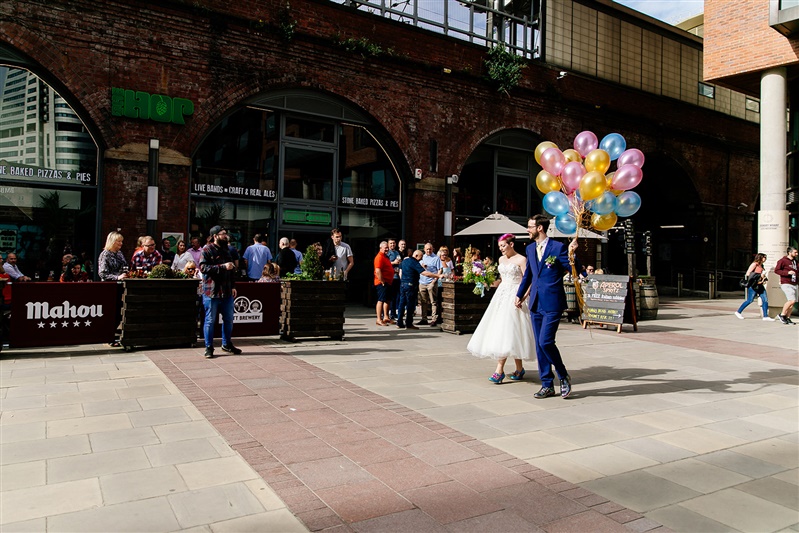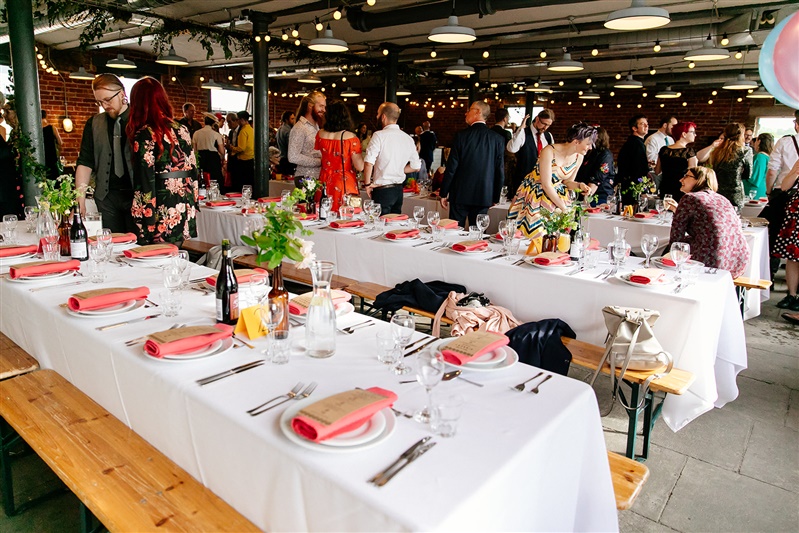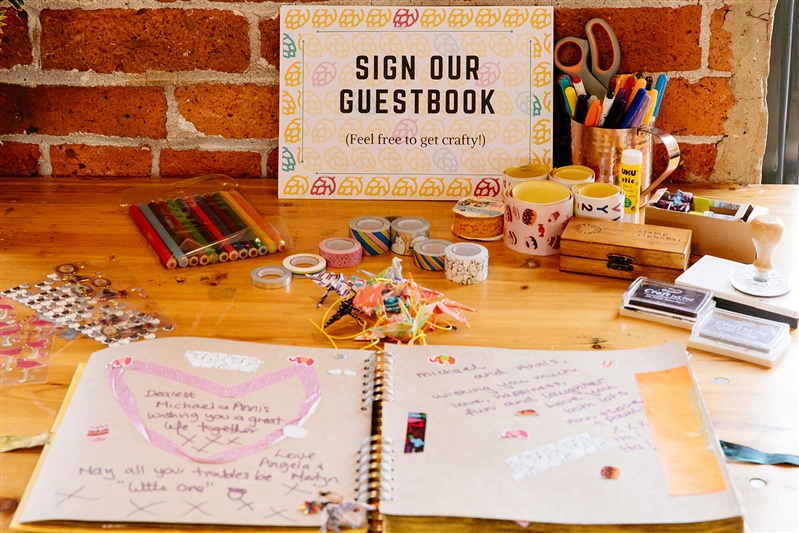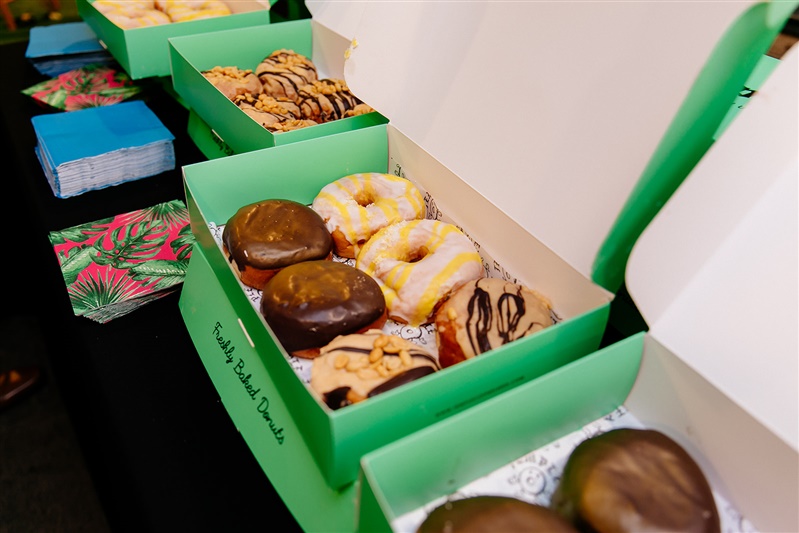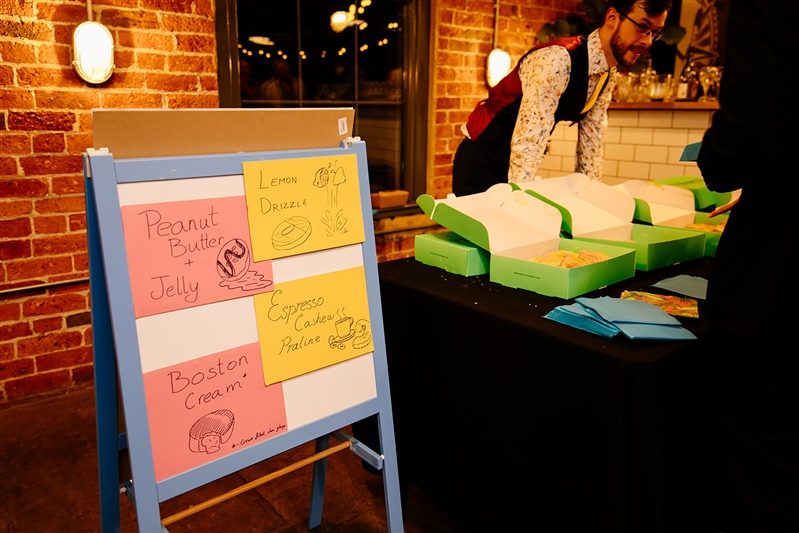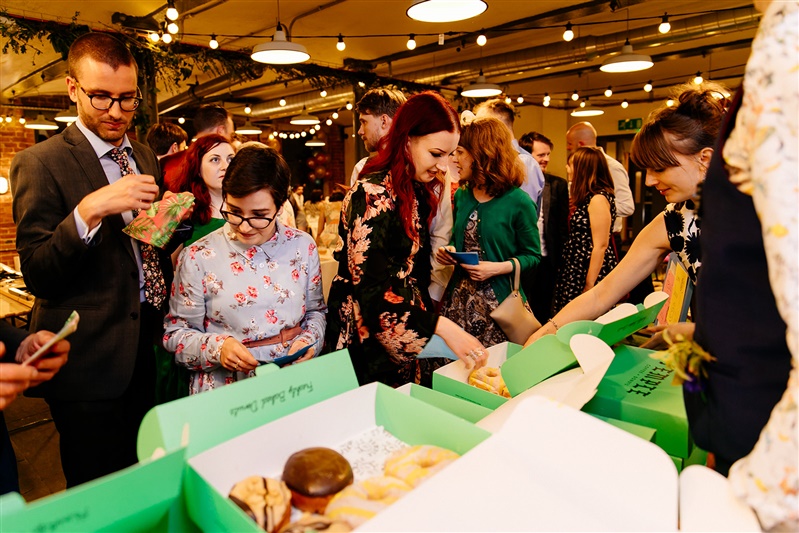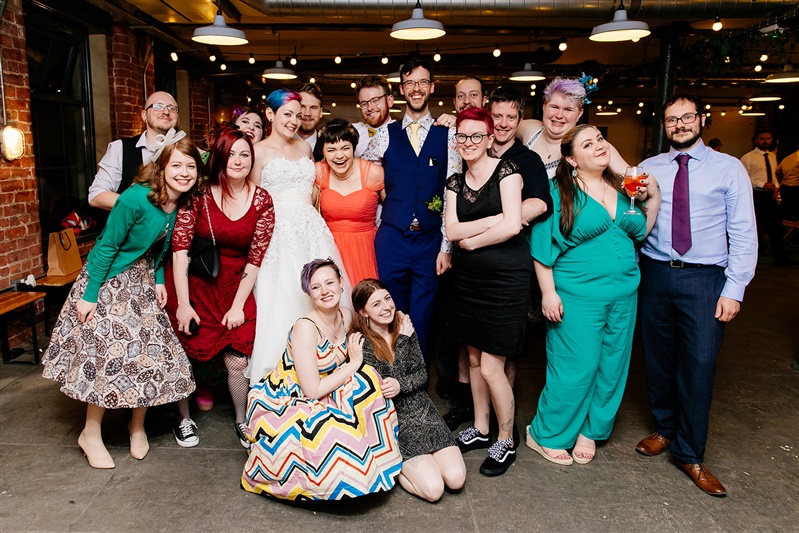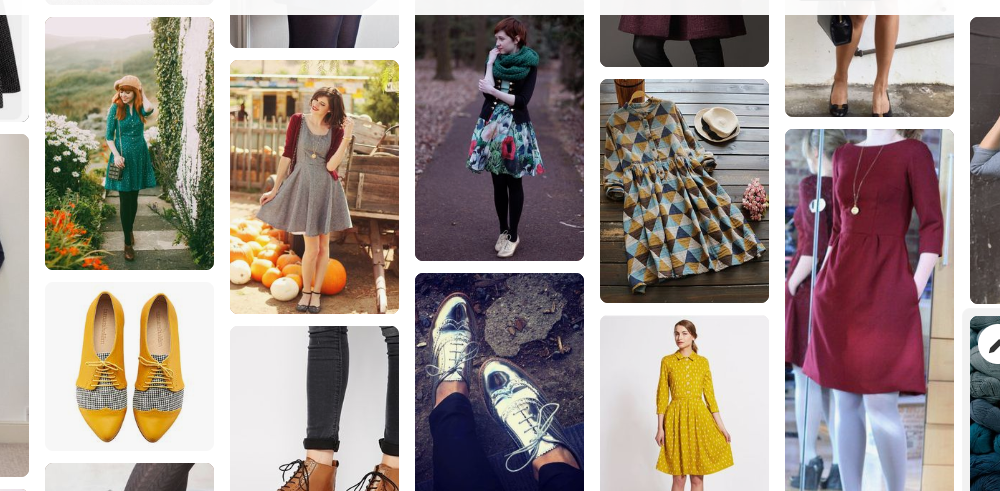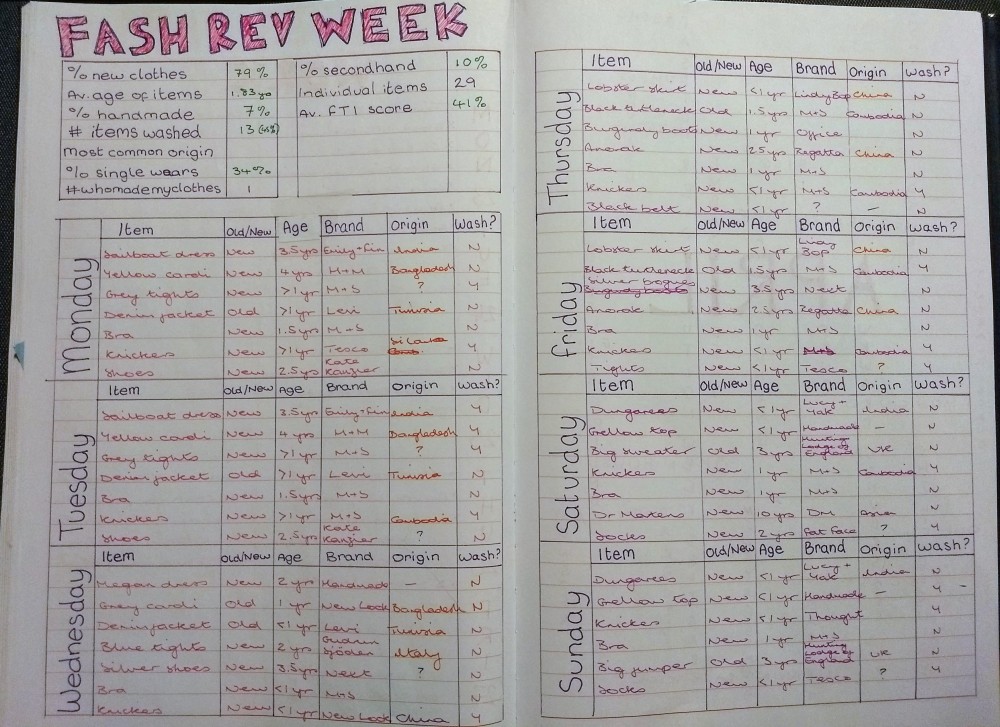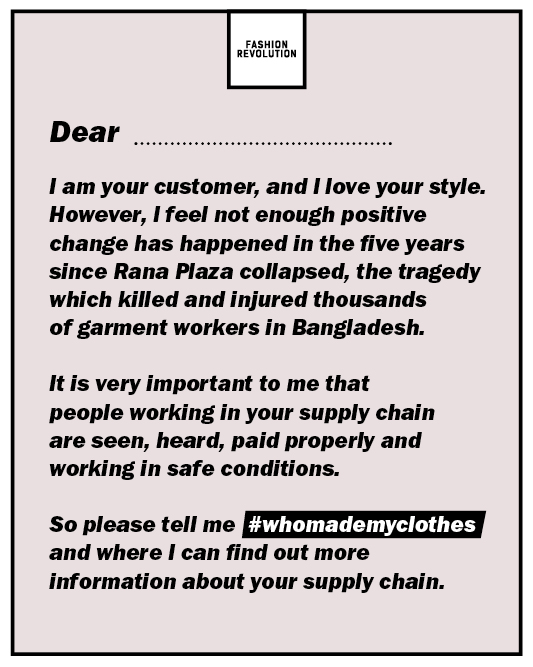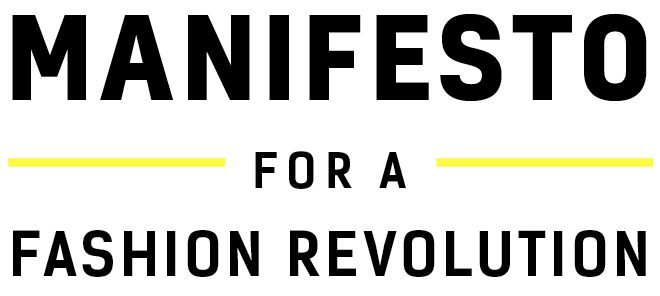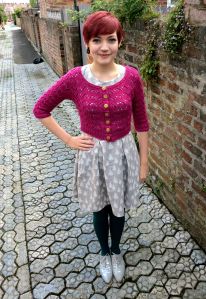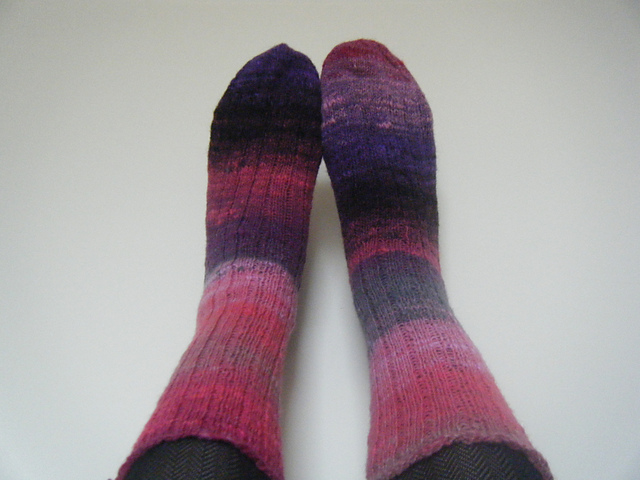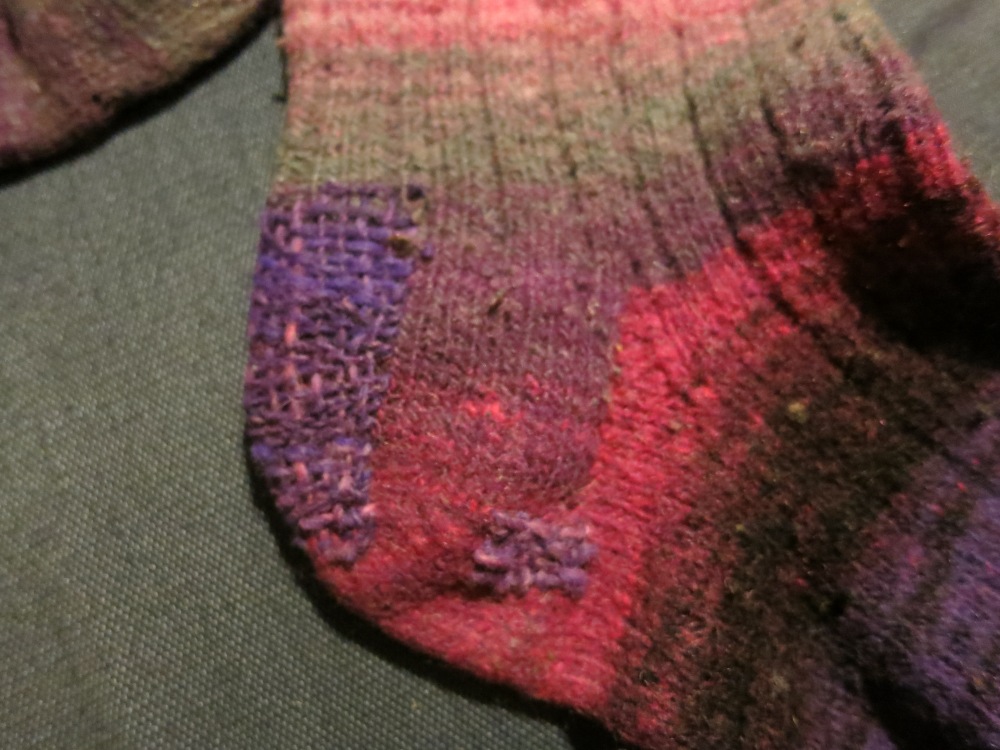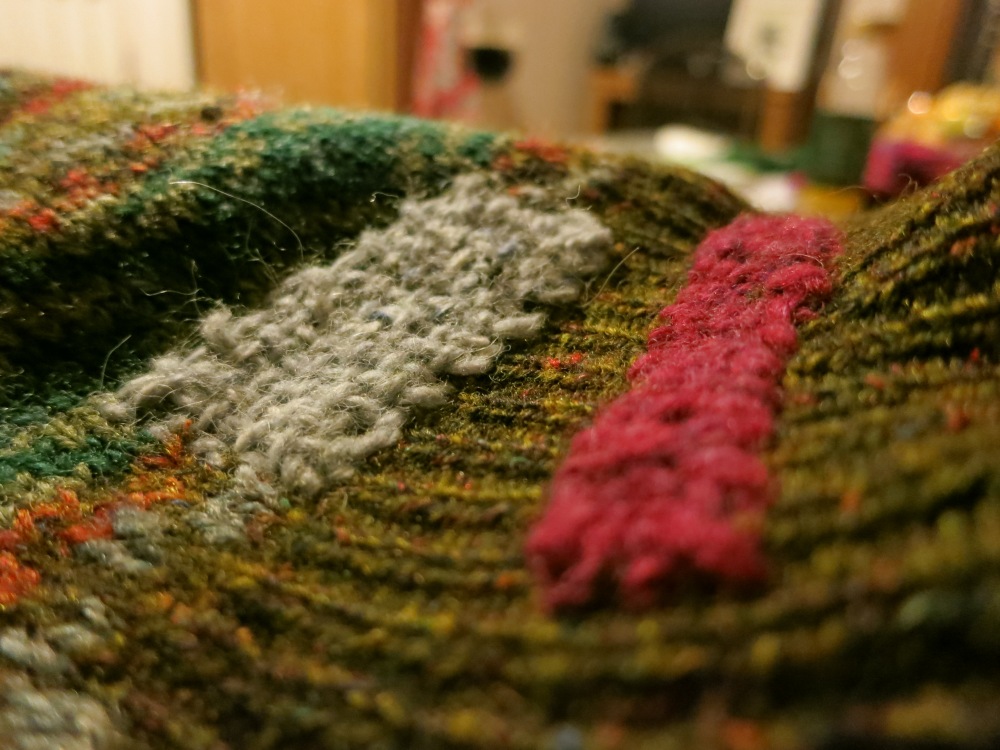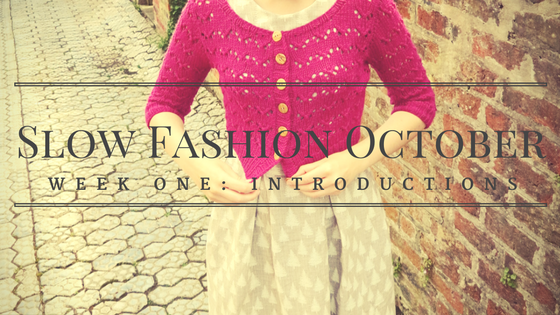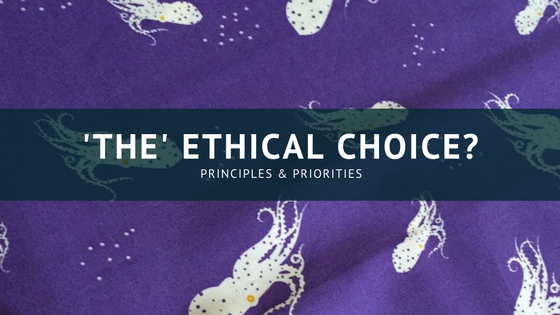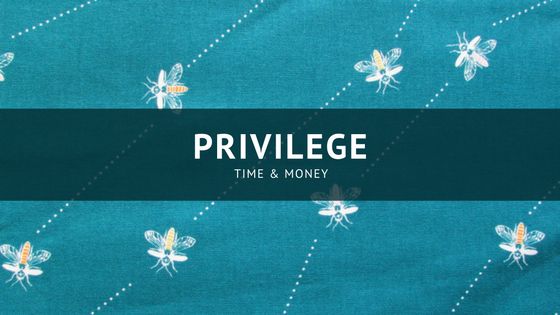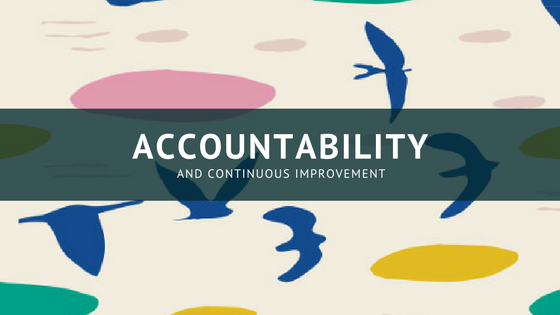We got married, and it was the best day ever.
OH HEY THERE, GANG. Remember me? I’m that blue-haired numpty who finds the time to make a bunch of her own clothes, while away hours on social media, sit on the sofa picking her nose, etc., but somehow never gets round to updating her blog. Yeah, that one, that’s me.
It seems to get proportionately harder to write a new post the longer it becomes since I wrote the last one. My default mode for blogging still seems to be the same as my 2005 Livejournal self (no, please don’t go looking for that one) – if there’s a gap between posts, I immediately start racking my brains for all the things I’ve done in the gap, as though all three of my readers are intensely interested in the number of training sessions I’ve run for work, the fact that I’ve finally, started therapy (at long fkn last), the number of biscuits I’ve eaten, and so on.
It’s hard to blog about any topic that’s personal to you without it becoming a personal life record of a sort, and I think I need to cut myself a bit of slack and remember that the world isn’t necessarily crying out for continuity all the darn time.
Quite keen to fill The Little Quince in on one fairly major life event, though.
Mike and I only blimmin’ well went and got married!
Oh yes we did!
(And this post is basically going to be all about our wedding, with a few handmade/sustainable highlights thrown in to keep it on theme. Soz/not soz.)
Ohhhh, it really was the most wonderful day. We kept the whole thing as chilled as possible, including a few of the traditional bits and bobs but, for the most part, just planning things exactly the way we wanted them.
The whole shebang took place in Leeds, and we spent the evening before having dinner with my brother, sister-in-law and my gorgeous niece and nephew, before heading off to our hotel to get a reasonable night’s sleep. On the morning, we had breakfast at Bill’s, then spent a few hours pottering between venues getting things set up. In the early afternoon Mike got ready and I waved him off to the ceremony venue, while I got ready with my mum and my best babe Alice.
Isn’t my dress a beaut? It’s a Justin Alexander creation, found on eBay for an absolute steal and altered to fit me and to change the neckline into a sweetheart. It wouldn’t have felt right to get a new dress, given my sustainable fashion concerns in other areas of my life, and I’m looking forward to donating it on so it can have a third lease of life for someone else.
Still, though, look at that amazing lace overlay. And that swooshy skirt! I felt a million dollars in it (although it did start to get uncomfortably tight after a three-course meal and a couple of pints, and Mike had to unzip it for me and hold it closed at the top during the speeches so I could have a bit of a breather).
My shoes were Irregular Choice, with the rubbish little bow removed and replaced with some seriously jazzy shoe clips from Crown & Glory. They ended up being a spot-on match for my hair on the day, which was pretty sweet.
Mike’s were Irregular Choice too – this pic doesn’t really do them justice but they’re an incredible oil-slick holographic finish.
Oh, and my shawl. My beautiful shawl!
We didn’t have a gift list for our wedding – Mike and I have been together for nearly ten years and lived together for eight, so it seemed pointless to ask people for Le Creuset roasting tins and egg coddlers and potpourri bowls. But we have a ton of wonderfully creative people in our lives whose talents we are constantly in awe of – so we asked all our friends, if they felt comfortable doing so, to make us something instead.
My shawl was our gift from Sylvie.
I shout from the rooftops about my beloved Sylvie wherever I go – she’s the mastermind behind Phileas Yarns, a gorgeous range of hand-dyed yarns with colourways inspired by her travels all over the world. Back in April, Sylvie dyed me up a beautiful batch of her Escapism heavy lace – half-and-half Blue-Faced Leicester and baby alpaca – in her sunshine-yellow Manhattan colourway, and I spent the next couple of months transforming it into the Mayapple shawl by Dee O’Keefe.
God, isn’t it a beaut? The knitting started to feel a bit interminable towards the end, as lace always does, but I actually really enjoyed knitting this. The ‘wedges’ of the central section are different stitch patterns, which helps keep things interesting, and the wide border is knitted on once the main body is complete, so knitting the whole thing feels like a process of several stages, which kept the fatigue at bay.
Typically, our wedding day was so warm and muggy that I actually only ended up wearing my beautiful shawl for the walk between the hotel and the ceremony, and barely at all after that. But you can bet your life I’m going to be wearing it for a long time to come, and smiling every time I think about the association.
We got married at The Leeds Library.
Do you know the Leeds Library? It isn’t a municipal library; in fact, it’s one of the oldest remaining subscription libraries in Europe, and it’s tucked away behind a very unassuming facade on one of the main shopping streets in the centre of Leeds. The only hint of what lies behind is the sign which sits outside and displays the library’s Word of the Day.
They had a special one for us that day:

‘Espousal’. How precious is that?!
Our wedding ceremony was bloody lovely.
I mean, of course it was. But I don’t think I’d fully realised how much it would affect me in the moment, or how deeply I’d feel it. I’ve been to plenty of weddings before, and it’s always moving, but it’s very different being the people at the front, looking into each other’s eyes, making the vows.
Our families all got involved. Our mums were our witnesses; Mike’s dad gave a reading (involving surprise dinosaurs!); my seven-year-old niece walked me down the aisle (which was absolutely the best thing ever); and my five-year-old nephew was our ring bearer. It couldn’t have been any more special.
And, bloody hell, being surrounded by everyone you love really is something incredible, isn’t it? I’d always been of the dismissive ‘you don’t get married for other people, you get married for you’ standpoint, but I couldn’t believe how much it meant, and how emotional it it, to have all your friends and family there to witness your making a lifetime commitment to the person you love, and for them all to be so full of joy for you both, individually and together.
God, we’re disgusting. I love him so much.
Then it was time for a piss-up in a brewery!
(Because could you imagine us having a wedding party anywhere that didn’t have good beer?)
Off we all went to our absolute favourite beery destination in Leeds: Northern Monk brewery tap! It’s a 15-minute walk through the city centre, and it seems that people aren’t used to seeing wedding parties milling about in the middle of Leeds… especially not one with so many balloons.
Northern Monk is just the best.
The beer’s amazing, the atmosphere’s amazing, the people are amazing. Our reception was on the third floor of a converted mill building, so we turned one corner of it into a garden area with grass, lawn games, outdoor seating and solar-powered flamingos (obviously).
There was beer aplenty; there were non-alcoholic cocktails; there was a delicious vegan dinner which included the best sticky toffee pudding I’ve ever eaten in my life. There were temporary tattoos, and art for people to take away, and a craft corner for our guestbook.
There were speeches from us (Mike and I did a joint speech where we both had a section entitled ‘say nice things about the other person’), my dad (an adorable, eccentric, multimedia extravaganza) and two of our best friends (there wasn’t a dry eye in the house after Charlie paid tribute to the power and the importance of online friendships).
There was my dad’s shirt.
My dad had a big birthday two weeks before our wedding, and because I didn’t have quite enough to be getting on with (that enormous shawl needing finishing and all), I decided to make him a custom-fitted shirt as a special gift.
He’s secretly quite a peacock, my dad: he lost a load of weight a few years ago, and since then he’s been tentatively discovering a new love for bright colours and snazzy patterns. So this amazing eighties-throwback cotton lawn from Fabric Godmother was an easy choice, although the jealousy in Mike’s expression was extremely evident when I pulled it out of the washing machine. Pattern-matching this print was a challenge, to say the least, but I took my time (and wasted a bunch of fabric, ugh) and ended up with a result I’m really happy with. Look at that pocket!
I used the amazing Fairfield button-up pattern from Thread Theory designs, which I remain convinced is a piece of pure witchcraft as it’s such a brilliant, straightforward, easy-to-follow pattern. This time I made the version with a pleat at the back yoke, and used the pieces to accommodate a larger belly to make sure it was a comfy fit.
Guys, he loved it.
He loved it so much he said he was going to save its maiden outing for our wedding.
And that’s exactly what he did.
Bless him.
After speeches, there were DOUGHNUTS.
Because, let’s face it, who’d choose to have wedding cake when they could have doughnuts instead?
Getting in a massive order from Temple Coffee & Doughnuts might just have been the very best wedding decision we made. The size! The flavours! The beautiful mint-green boxes! The very fact that it’s possible to buy delicious vegan doughnuts in such vast quantities! One of my favourite memories of the evening was watching my cousin’s six-year-old daughter bimbling about, clutching a doughnut the size of her face and looking as though she couldn’t quite believe her luck.
And, you know what, they were VERY popular.
Yes, doughnuts were a bloody brilliant idea.
After doughnuts, it was time for a bit of a drink, a bit of a dance, an infinite carousel of hugs and love and good wishes, howls of laughter at bad erotica (a group of our amazing friends had taken the ‘make us something’ theme and collaborated to create an anthology of terrible, hilarious, unsexy porn), and, eventually, wind-down and bedtime.
What a perfect day it was.
I can’t say I’m desperate to get married again any time soon (much to Mike’s relief, I’m sure): even our relaxed, quite low-key wedding with a lot of the traditional stresses taken out involved a lot of planning, sorting, printing, organising, running around and so on, and it is quite nice to be able to spend our evenings doing things that aren’t wedmin again (oo-er). But it was exactly what we wanted, even the bits that didn’t run exactly to plan, and I wouldn’t have changed a thing.
The handmade elements of our day weren’t a truly integral part of the whole thing: our wedding would have been the same, or at least just as lovely, without them, and I certainly wasn’t desperate to add any extra stresses like making my own dress or icing my own cake or any of that mad business. But they were lovely additions to our day, and the amazing handmade gifts we’ve received from our friends and family are the things we’ll remember for the rest of our lives (particularly the porn, I suspect).
Plus, of course, the whole ‘handmade’ thing means I can shoehorn a long, self-indulgent post about our wedding onto my handmade/sustainable fashion blog, and pretend it was on theme all along.

